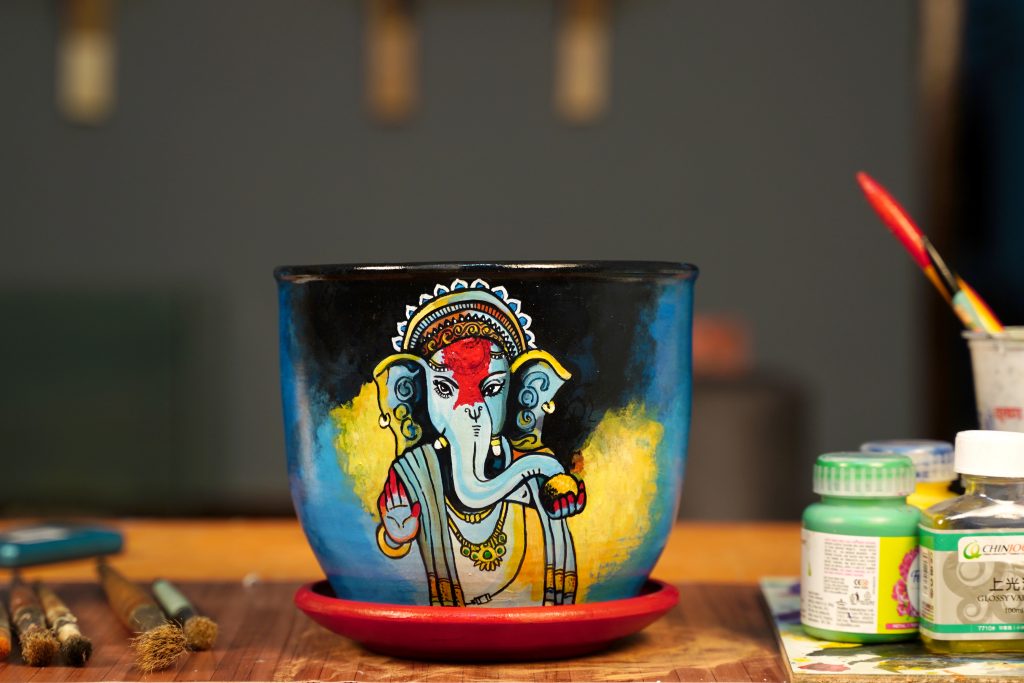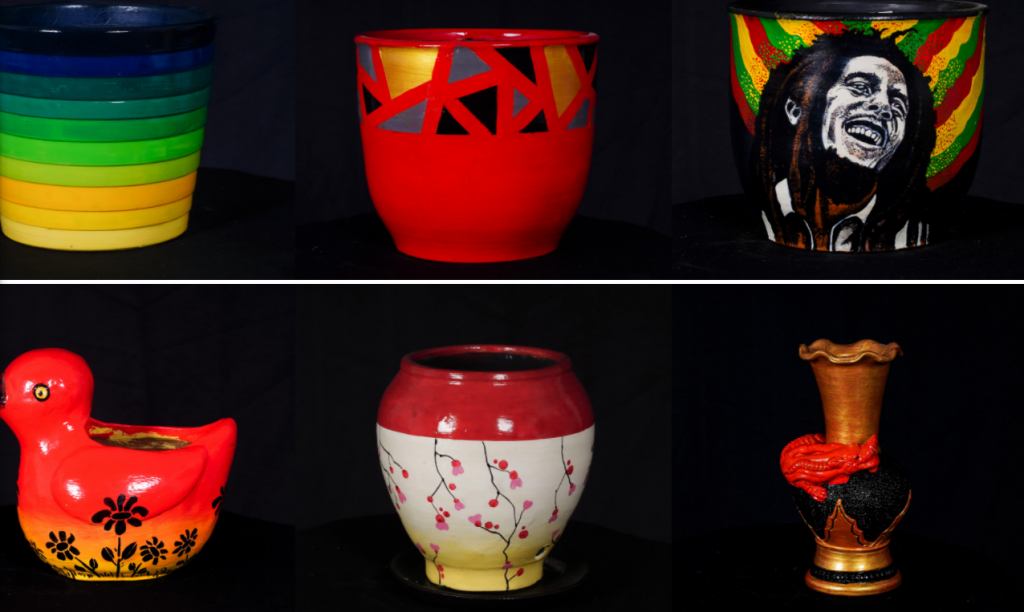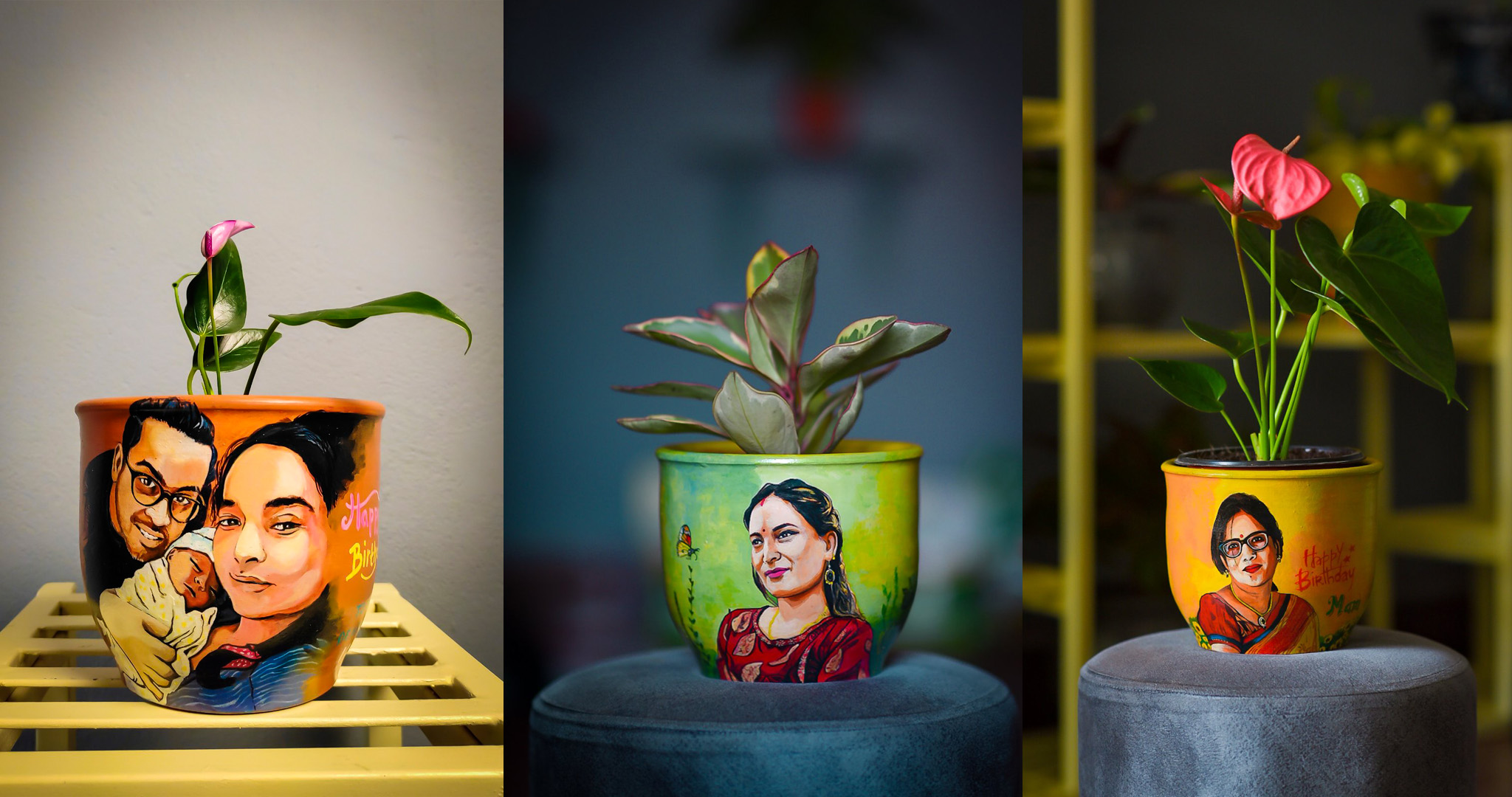Have you ever thought of a plant pot as a canvas for any painting? Recently, a team of five young people have initiated a startup named What the Plant that uses plant pots as a canvas, paints them to add value and sells them with/without plants.
What the Plant is a collective brainchild of Sabin Shrestha, Prashidha Shrestha, Kamal Prajapati, Uday Karmacharya and Bibek Karki that they started about three months ago by utilising their multiple and multidimensional experiments.
Search for newness
In the second lockdown earlier this year, Sabin had taken a break from the hospitality industry. He then proposed to other team members about starting something on their own, utilising the skills they had.
Following that, the four discussed the proposal and decided to start the business.
Also, as one of the trending businesses in Nepal, plant business attracted them, although they, except Prashidha, knew nothing about the plant and its business, Kamal says.
“Prashidha’s father has been engaged in the plant business for four decades. Therefore, we initially thought of sourcing the plants from his nursery, branding them and then selling them,” shares Kamal.

But, plants were a regular business; different nurseries were selling the same and similar plants without any newness. Therefore, the team began exploring different ideas. That is when they decided to prioritise pots more than plants.
“Earlier, we only sold plants, but later we started selling different kinds of pots, first plastic pots, then ceramic and fibre pots,” Sabin says, “After finding that these all are imported from the Indian and Chinese markets, we thought of using locally produced products such as clay pots.”
The team then thought of the idea of manufacturing artistic pots that add to the beauty and mood of the plants. In the meantime, Uday, a post-graduate in fine arts and a professional photographer, joined the team, and then they began painting.
“After completing my masters in 2012, I went on to become a photographer. During that period, I used to paint but occasionally,” he recalls, “In the last lockdown, Kamal briefed me everything about What the Plant and proposed if I could add my creativity to the pots.”
Before that, Prashidha’s brother was also doing some artwork on the pots. He was doing that as a hobby, but the team believed if it wanted to sell the painted pots, it had to do it professionally.
“So, I started painting pattern designs on the pots. Gradually, I thought about making it more premium. Therefore, I started making such paintings that I used to do on the canvas. I made a pot the canvas,” says Uday.
Besides beautifying the pots, the team also thinks paintings of cultural costumes, heritage monuments, gods/goddesses and many more also reflect the community’s culture, adding more value to the pots.
“All our pots are unique, we never repeat any designs and paintings because, besides something to hold the plants, they are also standalone art pieces, decorative items or gifts,” Sabin says.
Learning by doing
Yet, the team is also aware of the limitations of its jobs. The major concern for the team has been the short life of the pots. Currently, hence, the team is exploring ideas for making it durable.

“We are still in the trial and error stage,” says Sabin.
People think they need a huge space for gardening, but the team wants to implant the concept that a little space such as a study table, workstation, living room, or inside your home can be suitable for plants.
“Side by side, we are working to attach this to the lifestyle of people and make people understand our own Nepali pots can be a tremendous piece of decor when one adds creativity to it at a very competitive price. This is what we find as our major challenge,” says Sabin.
However, the team sees challenges as opportunities. “Our team consists of experts in different fields and that is what our strength is,” says Uday.
Currently, What the Plant team has been sourcing plants from around 10 nurseries and pots from Thimi of Bhaktapur. Not only does this group sell plants and artistic pots, but it also guides people on how to take care of both plants and pots.
“People are showing interest in it. They are finding it unique. We have already sent our portraits to different countries abroad including the USA and Australia. This is what motivates us,” says Uday.

The team is now focused on building products in different designs and colours, promoting and refining local products and offering customers colourful and customised options.
“We have regular pots and antique pots. We have already been able to make 500 pots ready every and hit the market aggressively,” says Sabin, “Now we want to increase this. Simultaneously, we will approach retailers and explore ideas on relating art with people’s lifestyle.”
























